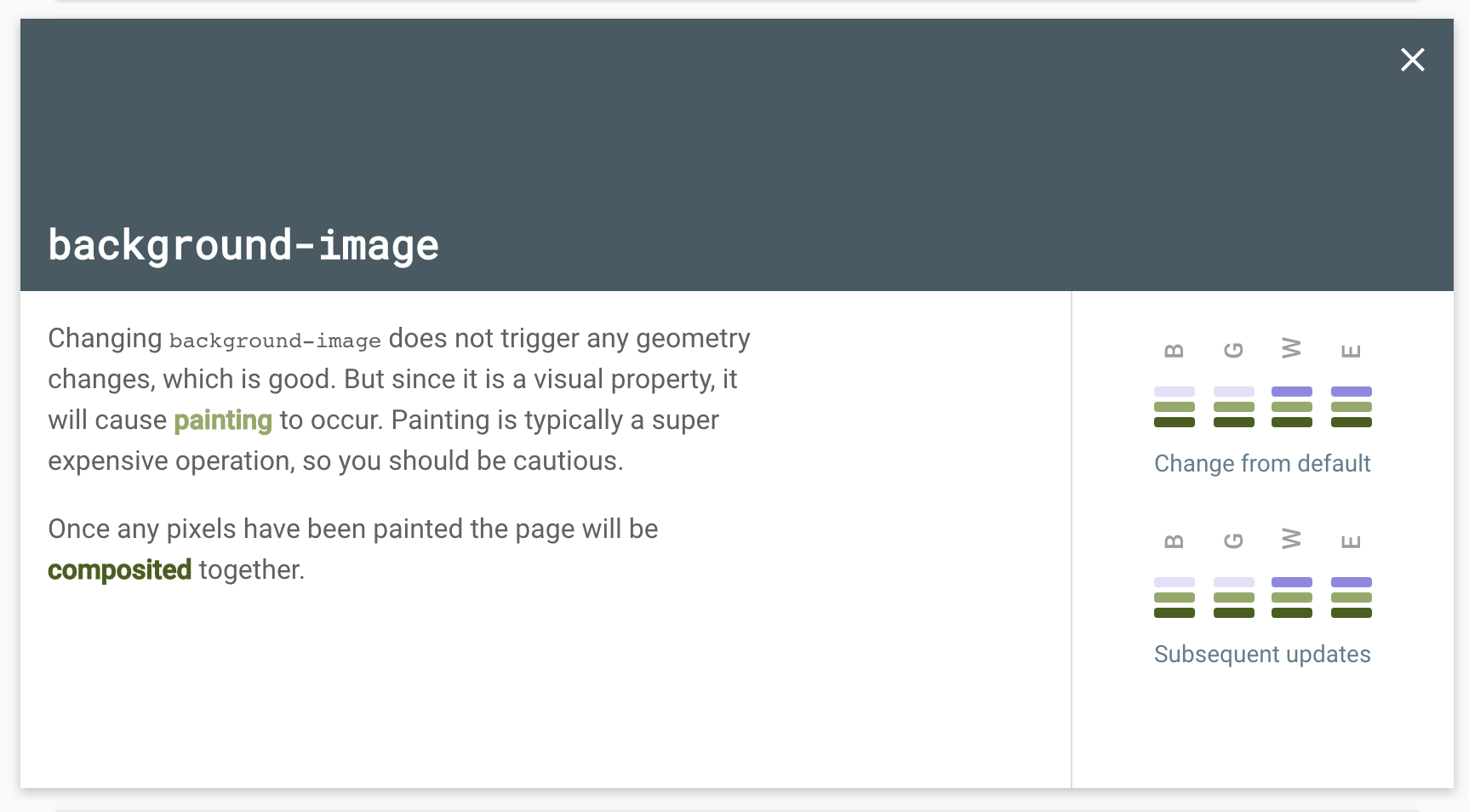linear-gradient로 skeleton screen 만들어보기
페이스북이나 유튜브의 첫 화면을 보면, 아주 잠깐 프레임을 그려주는 빈 페이지를 확인할 수 있다.
이러한 페이지를 개발에서 skeleton screen(스켈레톤 스크린) 이라고 한다.
참고로 skeleton은 뼈대를 의미의 단어를 뜻한다. skeleton screen을 적용하면 사용자가 “대기중”이라는 느낌을 전달하면서 빠르게 로드되고 있다고 인식하게 합니다.
그럼 이러한 UI는 어떤 방법으로 구현할 수 있을까?
CSS의 linear-gradient 속성과 :empty 선택자를 활용하여 이를 구현해 보도록 하겠다.
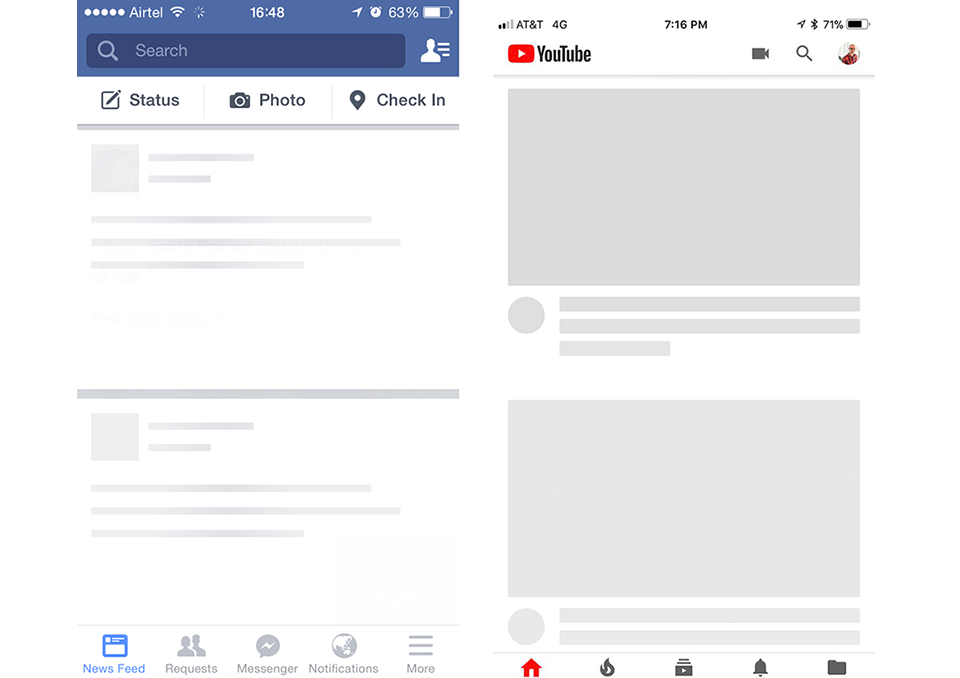
1. linear-gradient 원리
linear-gradient의 기본 문법은 아래와 같다.
1 | linear-gradient(angle, color-stop1, color-stop2); /* 선형 */ |
선형을 적용해보면, 방향과 적용 컬러를 순서대로 선언하게 된다. 방향 to bottom은 기본 값으로 생략이 가능하다.
1 | linear-gradient(to bottom, yellow 20%, steelblue 50%) |
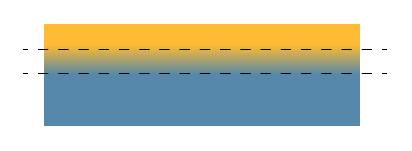
보통은 부드럽게 컬러가 변할 때 많이 쓰는 속성이지만, 경계면이 매끄럽게 떨어지도록 만드는 방법도 있다.
첫 번째와 두 번째 위치값이 동일할 경우, 경계선이 만나면서 그라데이션 영역이 사라지므로 아래와 같이 단색 면이 된다.
1 | linear-gradient(yellow 50%, steelblue 50%) |
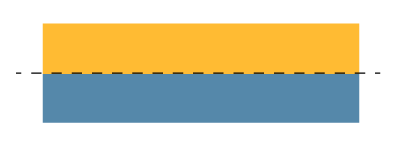
또한 두 번째 값이 첫 번째의 값보다 클 때(더 위쪽에 위치할 때) 도 브라우저는 동일하게 동작하는데,
두 번째 위치를 0으로 잡았다면 그 위치는 브라우저에 의해 이전 색상 정지의 위치와 같게 그 위치가 조정된다.
1 | linear-gradient(yellow 50%, steelblue 0) = linear-gradient(yellow 50%, steelblue 50%) |
두 번째 값이 투명할 경우에는? 첫 번째 색으로만 표현된다.
1 | linear-gradient(yellow 50%, transparent 0) |
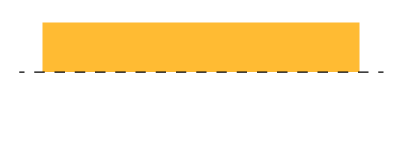
이러한 속성을 활용하면 하나의 div에 background-image로 도형을 드로잉해 볼 수 있다.
2. linear-gradient를 활용한 도형 드로잉

background-image 속성은 <image> <position> <size>의 값을 주어서 컨트롤할 수 있다.
1) background-image : 멀티 배경 지정
background-image 속성은 여러 배경 이미지를 추가할 수 있다 .
서로 다른 배경 이미지는 쉼표로 구분되며 이미지는 서로 위에 겹쳐서 표시된다.
원형 1개, 사각형 4개를 그리기 위해서 5번 선언해 주었고, y축으로 반복할 수 있게 repeat-y를 주었다.
1 | background-image: |
샘플) sceleton-step1
1 | <div class="skeleton-screen"></div> |
1 | .skeleton-screen{ |
2) background-position : 위치 지정
겹쳐 있는 각 도형의 위치를 x축, y축으로 재지정 해준다.
1 | background-position: |
3) background-size : 사이즈 지정
각 도형에 원하는 사이즈 width, height 값을 지정해다.
1 | background-size: |
샘플) sceleton-step2
1 | <div class="skeleton-screen"></div> |
1 | .skeleton-screen{ |
4) animation 레이어 추가
빛이 지나가는 듯한 움직임을 위해 흰색 그라데이션의 이미지와 keyframe animation을 추가하면 효과를 표현할 수 있다.
다만 주의할 점은, multi background의 경우에 쌓임맥락은 z-index와 약간 다르다는 점이다. (참고 : stacking-order-of-multiple-backgrounds)
하나의 요소 안에서 이루어지기 때문에 먼저 선언할수록 위쪽으로 쌓이게 되는데, 지금까지 만든 도형보다 위쪽에 레이어를 선언해주면 된다.
1 | background-image: |
샘플) sceleton-step3
1 | <div class="skeleton-screen"></div> |
1 | .skeleton-screen:empty{ |
3. 장점 및 활용범위
단 하나의 태그에서 CSS 만으로 그려질 수 있다는 점에서 코드가 간단하며 변형 및 확장이 용이하다.
또한 background-image 속성은 렌더링 시, layout 변동 없이 paint, composite 과정만 거치기 때문에 성능적으로도 이점이 있을 것으로 보인다.
이를 응용하면 CSS를 활용한 패턴 제작 및 로딩아이콘, 차트 등의 다양한 드로잉도 시도해 볼 수 있다.
background-image 속성의 브라우저 범위는 IE10 이상으로, 대응 범위를 확인하여 문법을 작성해야 하며 -webkit-, -moz-, -ms- and -o-의 벤더 프리픽스를 필요로 한다.
